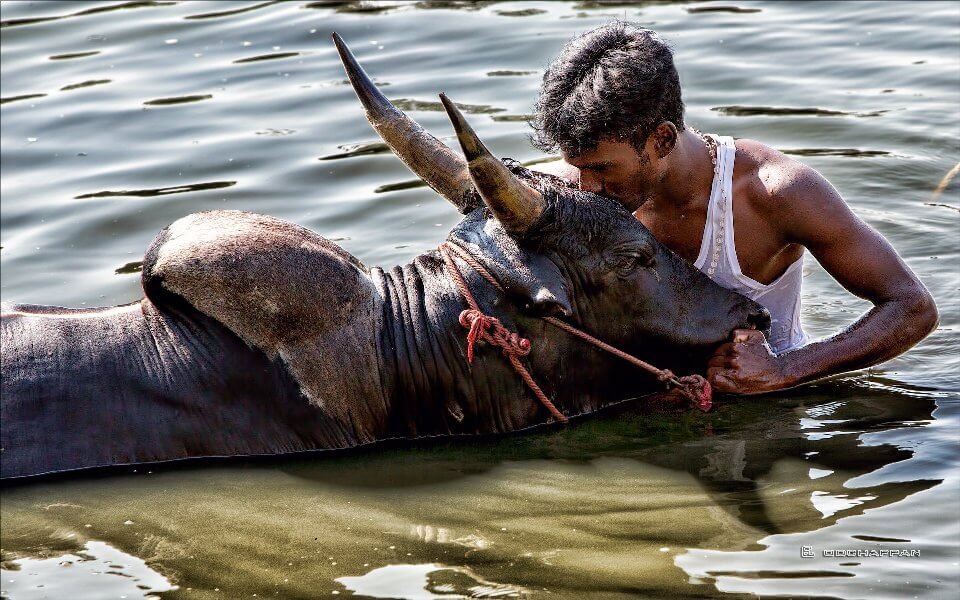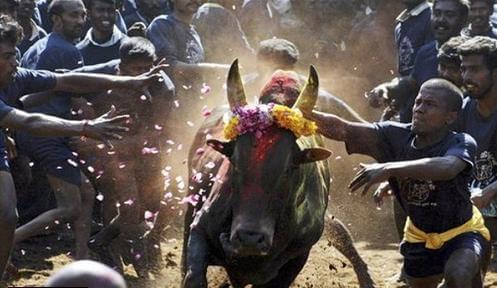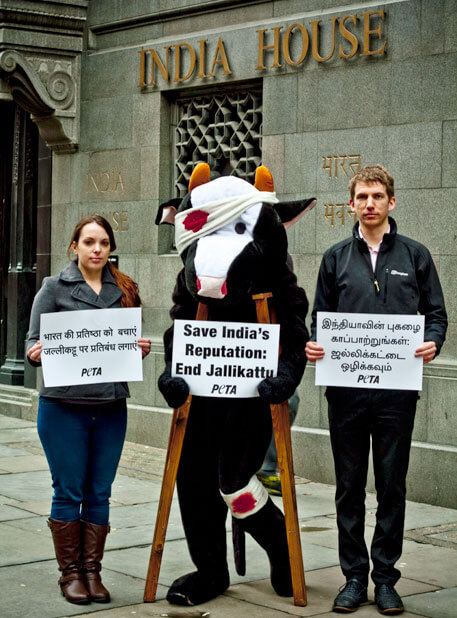
I was one of the protesters at Yonge and Dundas in Toronto last Sunday, demonstrating in solidarity with Tamil Nadu’s pro-Jallikattu movement. It was a rather sporadic protest organized mainly by Tamil youth to reverse the Supreme Court of India’s ban on the 2500 year old bull taming tradition originating in Alanganallur, Madurai.
Unlike the usual Tamil Nadu rallies, the Jallikattu movement had no single leader, was not influenced by any political lobby, and did not initially have any pivotal celebrity following. With mainstream media blacking out the protest during the initial stages, the rallies were organized entirely through social media and snowballed into one of the largest protest movements in Indian history.
Originating in Chennai’s Marina beach, the pro-Jallikattu movement evolved into a worldwide protest, with rallies held even in PETA’s headquarters in Los Angeles. Finally, an ordinance was passed on January 23 in Tamil Nadu’s State Assembly, making Jallikattu legal once again in India.

While the protest may inflame the anger of vegans and their fedora hats, there is much more to Jallikattu than it being a traditional cultural sport. One has to identify with Karthikeya Sivasenathipathy, a farmer and Trustee of Kangayam Cattle Research Foundation. He was one of the earliest faces of the Jallikattu movement advocating for native cattle breeds – specifically Kangayam cattle, the bull used in Jallikattu.
Since the 1990s, the native breed of cattle has been in steady decline in states like Tamil Nadu, making way for artificial insemination of imported Jersey cattle. Traditional sports like Jallikattu gave farmers an incentive to breed native cattle. Banning the sport further endangers the cattle breed. This is precisely why the protest theme was “Save Cattle, Save Farmers”.
Further, artificial insemination of bulls could result in A1 milk that has been associated with chronic diseases. At some point, the protest evolved into anti-corporation rallies, with youth demonstrating against Coca Cola and Pepsi Co. Some colleges vowed to end sales of multinational brands.

PETA India’s argument against Jallikattu has been rather insufficient, focusing on animal cruelty with anecdotal evidence. The American organization pointed out abhorrent bull owners who drugged bulls and used chilli powder. Though such incidents did take place, there were measures taken in recent years to deter such regressive practices.
Furthermore, Jallikattu only takes place with permission from the District Collector of Madurai. Animal welfare activists such as Radha Rajeyan compared the protest to a mass orgy, further infuriating youth and lending more support to the bull taming sport.
Thanks to PETA and animal rights activists, what was a once a small cultural event in Alanganallur spread into a sport practiced all over Tamil Nadu this Pongal season. Urban Chennaites who once couldn't tell the difference between bulls and cows are now naming different cattle breeds and voicing their support for farmers.
In a state with a gender segregated education and transportation system and still divided by caste, the movement made men and women, urbanites and farmers fight together side-by-side for Tamil people’s rights. Ironically, all this would not have been possible without PETA.

Coming back to my story, I headed to the local Loblaws supermarket after the protest. The young lady at the organic aisle seemed excited. “Home grown chickens! No GMOS!” she chirped.
My memory jogged back to my childhood years in Tamil Nadu. We had moved from a village to an urban enclave of educated professionals. My grandmother was grabbing some tomatoes from our mini-garden while our neighbours looked down upon us with scorn, sulking at our village habits. As in the movie The Secret Life of Walter Mitty, I came back to the present, chuckled at the $25 organic chicken price tag, and walked out.
My car was parked at the Hatha Yoga studio run by an American woman. The going membership rate was $200 per month. As I drove home sipping my Tim Horton’s coffee, a horde of fedora hats entered the studio. I shook my head at the irony.
The views expressed in this article are those of the author and do not necessarily reflect TamilCulture’s editorial policy. If you have an alternative perspective that you would like to share with our readers, give us a shout at [email protected]!
Related articles: No Time for This Sport: Why Jallikattu Needs to be Bull Rushed Out
Did you hear? We're launching TamilCulture Australia soon. Be sure to like our Facebook page to stay up to date!

























